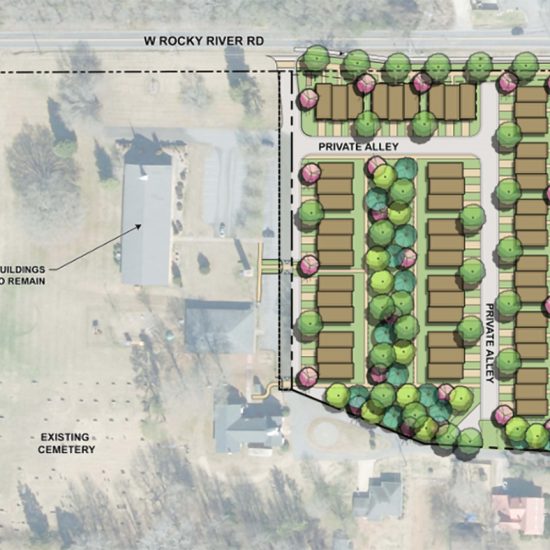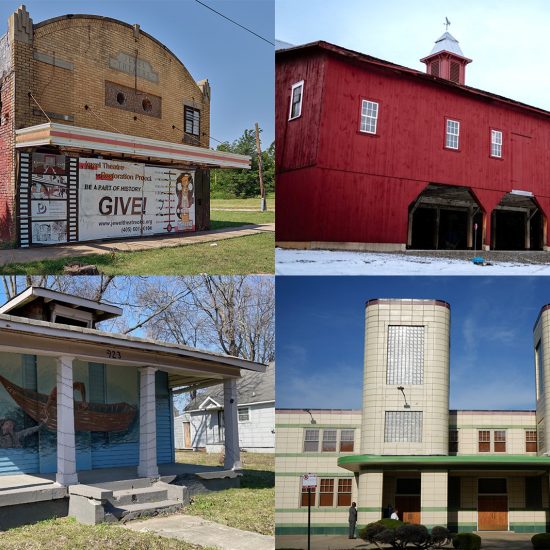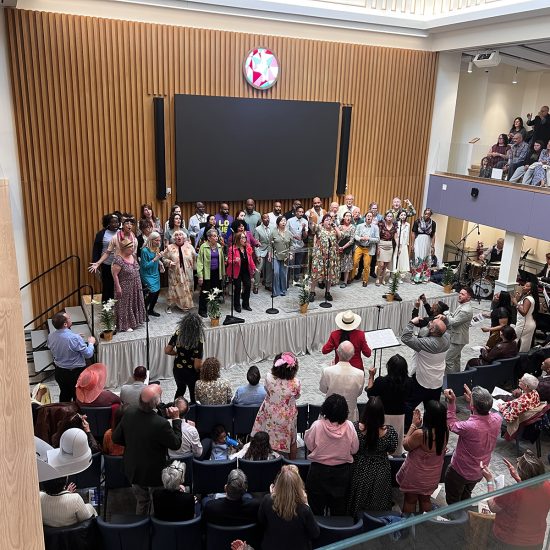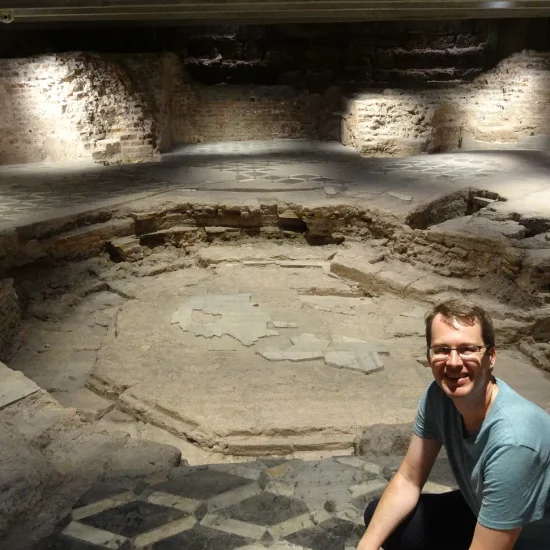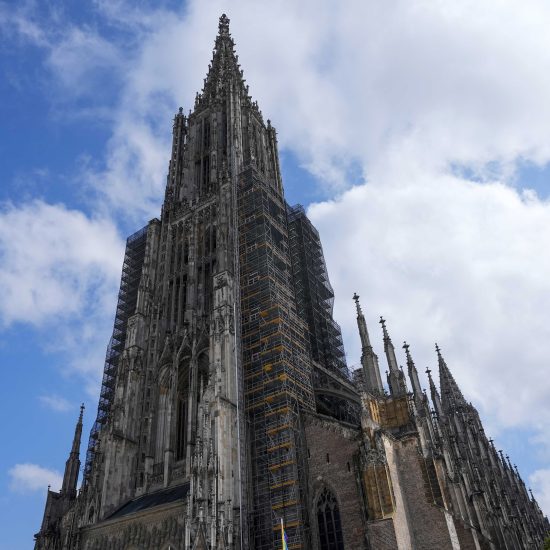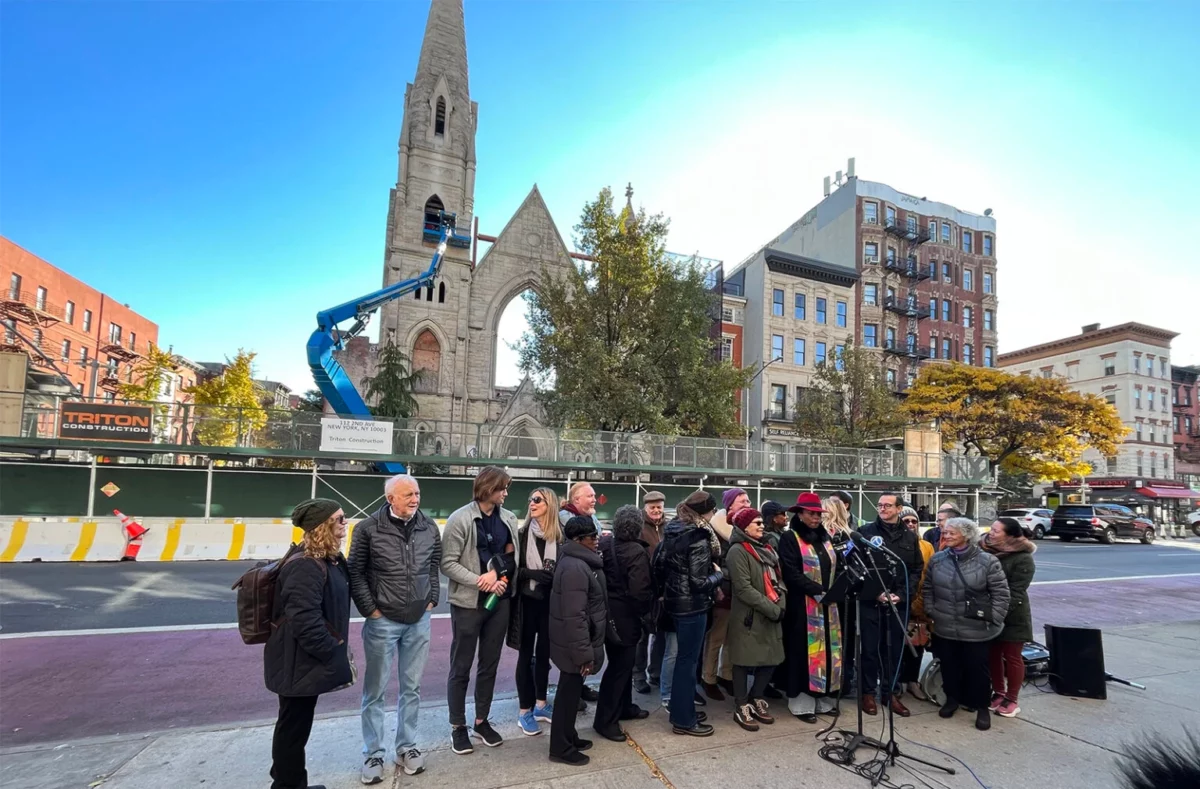
NEW YORK (RNS) — Three years after a six-alarm fire ravaged Manhattan’s Middle Collegiate Church, members of the congregation gathered on Monday (Nov. 20) to watch the first steps of the façade’s demolition.
“Even though this is a difficult decision, it is the right one for us, so we can move forward, so we can build back better,” said the Rev. Dr. Jacqueline Lewis, the church’s senior minister.
It was a bittersweet day. After the fire erupted, the façade became for some a “beacon of hope.” But uncertainty grew over whether it could be salvaged. Earlier this month, the city’s landmark preservation commission granted permission to demolish the severely damaged façade.
Starting with the north tower, the three-month-long demolition should leave the façade’s arch untouched. The congregation hopes to move back to an adjacent building onsite by the end of 2024. That building, on 50 East 7th Street, didn’t burn but was damaged by water used to control the church’s fire.
The first phase of the reconstruction will focus on restoring the first floors of this partially damaged five-story building. Once the old sanctuary is reconstructed, the church plans to hold services on the first floor and lease the ground floor to a “like-minded, mission-aligned partner,” Lewis said.
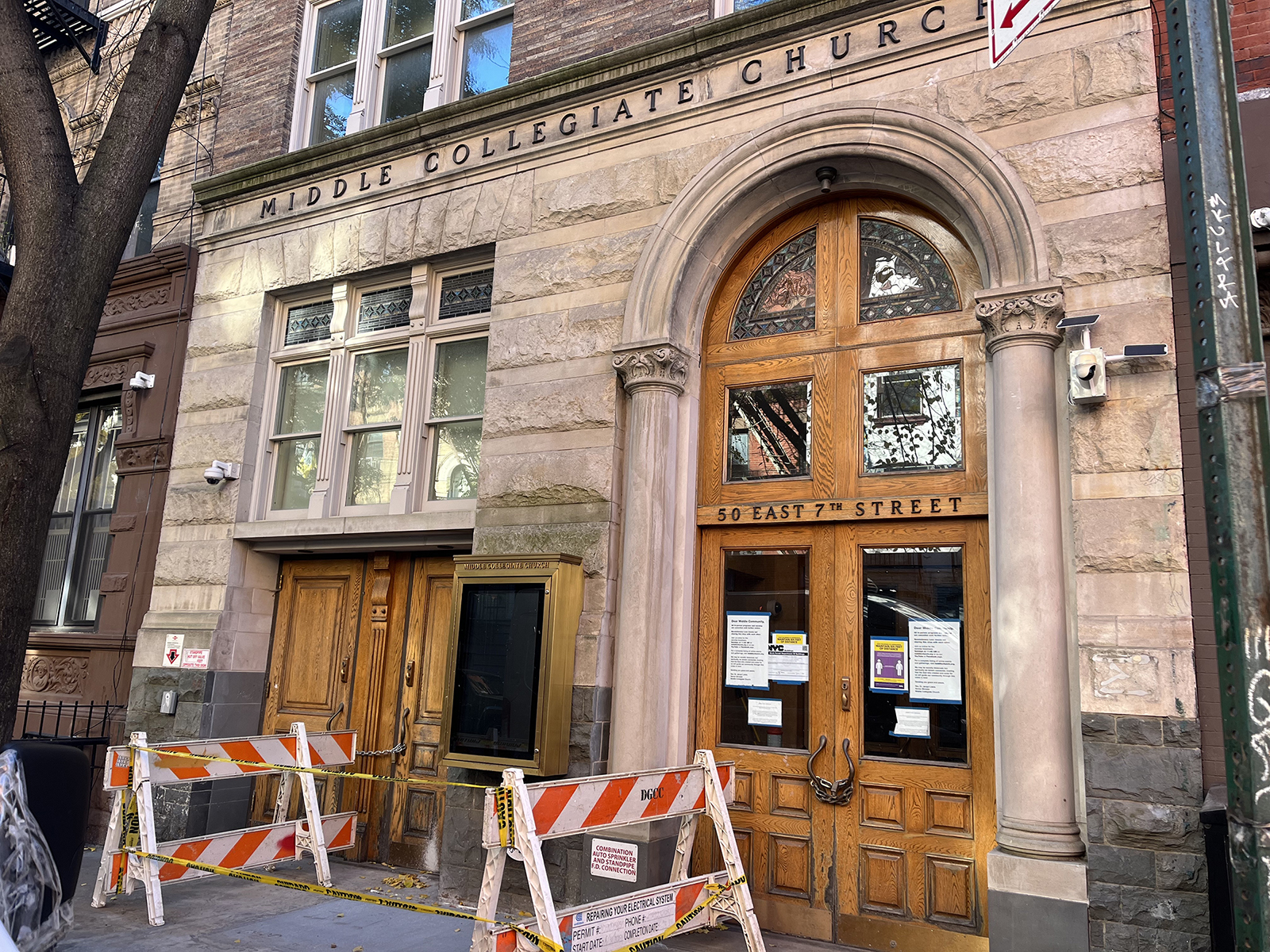
A locked entrance to the partially damaged Middle Collegiate Church building at 50 East 7th Street in Manhattan, New York. (RNS photo/Fiona André)
The congregation is already working on architectural plans, with an expected cost of between $30 – $40 million. As of Nov. 1, the church had raised $6 million.
After the fire, Middle Church held services online before gathering at East End Temple, a nearby Reform synagogue. Joshua Stanton, East End’s rabbi, said the arrangement worked well.
“It has been a beautiful collaboration, a beautiful partnership,” said Stanton. “In my mind, it is the essence of pluralism. You have to actually love your neighbor and actually act on it.”
The façade’s demolition left him sad, but he is also eager to see the new sanctuary completed, he said.
“My hope and prayers for Middle Church community, is that it rises as never before in ways that inspire us, as your church already has for centuries,” Stanton told Lewis during a press conference.
The church also holds great value for the lower East Side neighborhood. Built in 1892, it is one of New York’s four collegiate churches. The congregation was founded in 1628 by Reformed Dutch settlers, making it one of the oldest Protestant congregations in America.
Today, the church is dually aligned with the Reformed Church in America and the United Church of Christ.
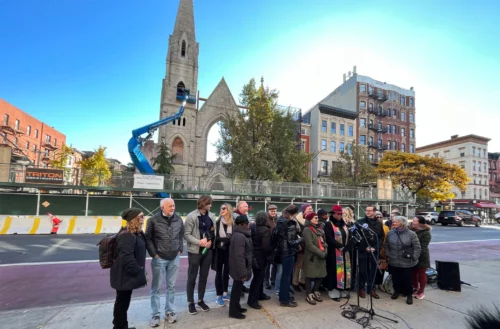
The Rev. Dr. Jacqueline Lewis, right in red hat, addresses press conference attendees in front of Middle Collegiate Church, Monday, Nov. 20, 2023, as demolition of the remaining façade begins in Manhattan, New York. (RNS photo/Fiona André)
When Pamela Edgar joined the congregation 12 years ago, she was struck by how the church reconciles its Reformed heritage while defending progressive and inclusive values.
“It’s a beautiful old church that welcomes everybody,” she said. “It has a traditional building and a very modern spirit.”
During the 1980s AIDS crisis, the church welcomed members of the LGBTQ+ community by offering meals and hosting funerals, Edgar said. It hosts queer-centered events and campaigns to change the Reformed Church’s rules on LGBTQ+ members’ ordination.
In 2020, after George Floyd’s death, the congregation organized #BlackLivesMatter gatherings and gave anti-racist trainings. It also distributes food and provides resources to migrants.
Tom Smucker, who described Middle Church as “progressive and inclusive,” said he looked forward to “coming back home.”
“It is important to me as a longtime resident of the neighborhood, a longtime member. It is very meaningful to our family,” said Smucker, who has lived in the East Village since the 1960s.
The fire ravaged the church’s Tiffany-stained glass windows and led to the loss of many historical records. The church’s bell, which announces the inauguration and death of every American president, remained intact and is being kept at the New York Historical Society until the end of the sanctuary’s reconstruction.
Lewis reaffirmed Middle Church was more than the edifice.
“The church is not the building, it’s the people,” she said. “They are also doing fierce love in the world.”

